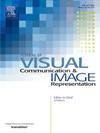OODNet: A deep blind JPEG image compression deblocking network using out-of-distribution detection
IF 2.6
4区 计算机科学
Q2 COMPUTER SCIENCE, INFORMATION SYSTEMS
Journal of Visual Communication and Image Representation
Pub Date : 2024-10-01
DOI:10.1016/j.jvcir.2024.104302
引用次数: 0
Abstract
JPEG is one of the most popular image compression techniques, with numerous applications ranging from medical imaging to surveillance systems. Since JPEG introduces the blocking artifacts to the decompressed visual signals, enhancing the quality of these images is of paramount importance. Recently, various deep neural networks have been proposed for JPEG image deblocking that can effectively reduce the blocking artifacts produced by the JPEG compression technique. However, most of these schemes could only handle decompressed images generated by a set of specific JPEG quality factor (QF) values employed in the network training process. Therefore, when the images are obtained by the JPEG QF values other than those used in the network training process, the performance of deep learning-based JPEG image deblocking schemes drops significantly. To address this, in this paper, we propose a novel deep learning-based blind JPEG image deblocking method, which employs out-of-distribution detection to perform deblocking efficiently for various quality factor (QF) values. The proposed scheme can distinguish between the decompressed images using the QF values used in the training set and those using the QF values not used in the training set, and then, a suitable deblocking strategy for generating high-quality images is developed. The proposed scheme is shown to outperform the state-of-the-art JPEG image deblocking methods for various QF values.
OODNet:利用分布外检测的深度盲JPEG图像压缩解锁网络
JPEG 是最流行的图像压缩技术之一,应用范围广泛,从医疗成像到监控系统。由于 JPEG 会给解压缩后的视觉信号带来阻塞伪像,因此提高这些图像的质量至关重要。最近,人们提出了各种用于 JPEG 图像解锁的深度神经网络,它们能有效减少 JPEG 压缩技术产生的阻塞伪影。然而,这些方案大多只能处理网络训练过程中采用的一组特定 JPEG 质量因子(QF)值生成的解压缩图像。因此,当图像是由网络训练过程中使用的其他 JPEG 质量因子值获得时,基于深度学习的 JPEG 图像解锁方案的性能就会显著下降。为解决这一问题,本文提出了一种新颖的基于深度学习的 JPEG 图像盲解锁方法,该方法采用分布外检测,针对不同的质量因子(QF)值有效地执行解锁。所提出的方案可以区分使用训练集中使用的 QF 值的解压缩图像和使用训练集中未使用的 QF 值的解压缩图像,然后,为生成高质量图像制定了合适的解锁策略。结果表明,对于不同的 QF 值,所提出的方案优于最先进的 JPEG 图像解锁方法。
本文章由计算机程序翻译,如有差异,请以英文原文为准。
求助全文
约1分钟内获得全文
求助全文
来源期刊

Journal of Visual Communication and Image Representation
工程技术-计算机:软件工程
CiteScore
5.40
自引率
11.50%
发文量
188
审稿时长
9.9 months
期刊介绍:
The Journal of Visual Communication and Image Representation publishes papers on state-of-the-art visual communication and image representation, with emphasis on novel technologies and theoretical work in this multidisciplinary area of pure and applied research. The field of visual communication and image representation is considered in its broadest sense and covers both digital and analog aspects as well as processing and communication in biological visual systems.
 求助内容:
求助内容: 应助结果提醒方式:
应助结果提醒方式:


